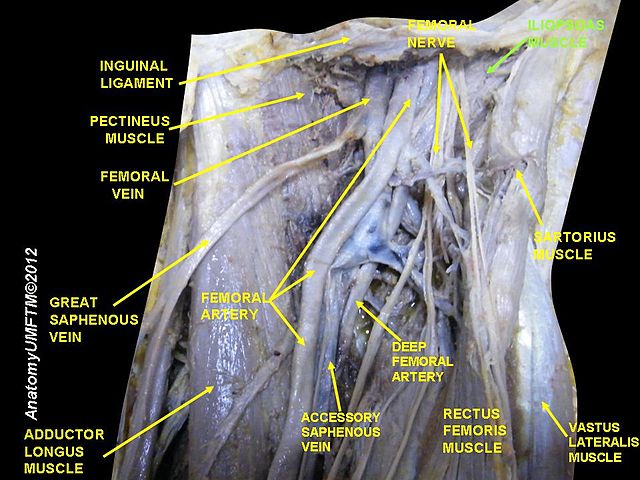Enhance your health with free online physiotherapy exercise lessons and videos about various disease and health condition
Iliopectineal Bursitis
Iliopsoas/ Iliopectineal Bursitis
Bursitis of hip is an inflammation of the sac like cavities associated with hip joint and bony prominences. In the hip and pelvis, the ischial, iliopectineal, and greater trochanteric bursae are commonly injured. Ischial and greater trochanteric bursitis will be discussed with posterior and lateral hip pain, respectively.
Iliopectineal Bursa

The Iliopsoas/iliopectineal bursa is located over the iliopectineal eminence anteriorly on the hip, between the iliofemoral ligament and the iliopsoas tendon; it extends from the trochanter minor to the iliac fossa, underneath the iliac muscle and is present, bilaterally. It is the largest bursa in the body and is frequently associated with hip diseases, such as osteoarthritis, rheumatoid arthritis and sports-related injuries, especially when the pre-exercise warmup is not performed adequately.
Mechanism and Causes of Iliopectineal/Iliopsoas Bursitis
There are generally two mechanisms of hip bursitis; inflammation due to excessive friction (most common) and post-traumatic injury. Direct blows and contusions can cause bleeding into the bursa and may result in hematoma formation. The iliopsoas/iliopectineal bursa is the largest bursa in the body and communicates with the hip joint in 15% of athletes.
This bursitis is associated with sports requiring extensive use of the hip flexors (i.e., soccer, ballet, uphill running,hurdling, jumping) and may be particularly disabling for athletes.
Symptoms of Iliopectineal/ Iliopsoas Bursitis
Athletes may present with severe, acute, deep groin pain radiating to the anterior hip or thigh. The pain may be great enough to disrupt normal gait and cause a limp, and it is often associated with a snapping sensation. Athletes will assume a position of hip flexion and external rotation to obtain relief. Pain is often related to the iliopsoas tendon snapping over the iliopectineal eminence. Symptoms may be exacerbated by hip extension (stretching of the iliopsoas) or when the supine athlete raises his or her heels off the table approximately 15°, thereby isolating the iliopsoas.
Examination of Iliopsoas Bursitis
Deep palpation of the femoral triangle where the musculotendinous junction of the iliopsoas lies elicits pain. MRI reveals a collection of fluid coursing adjacent to the muscle with iliopsoas/iliopectineal bursitis. Confirmation by ultrasonography or CT scanning may be required.
Treatment of iliopectineal bursitis
Treatment is almost always nonoperative and consists of rest,ice, NSAIDs, and stretching of the iliopsoas. Once the pain subsidesstrengthening exercises of iliopsoas can be started. If symptoms are recalcitrant to conservative therapy, corticosteroid injection or even release of the iliopsoas tendon near its insertion on the lesser trochanter and/or excision of the bursa may be necessary.
Return from Iliopectineal Bursitis to Home Page
Read more Here -
Recent Articles
|
Author's Pick
Rating: 4.4 Votes: 252 |

